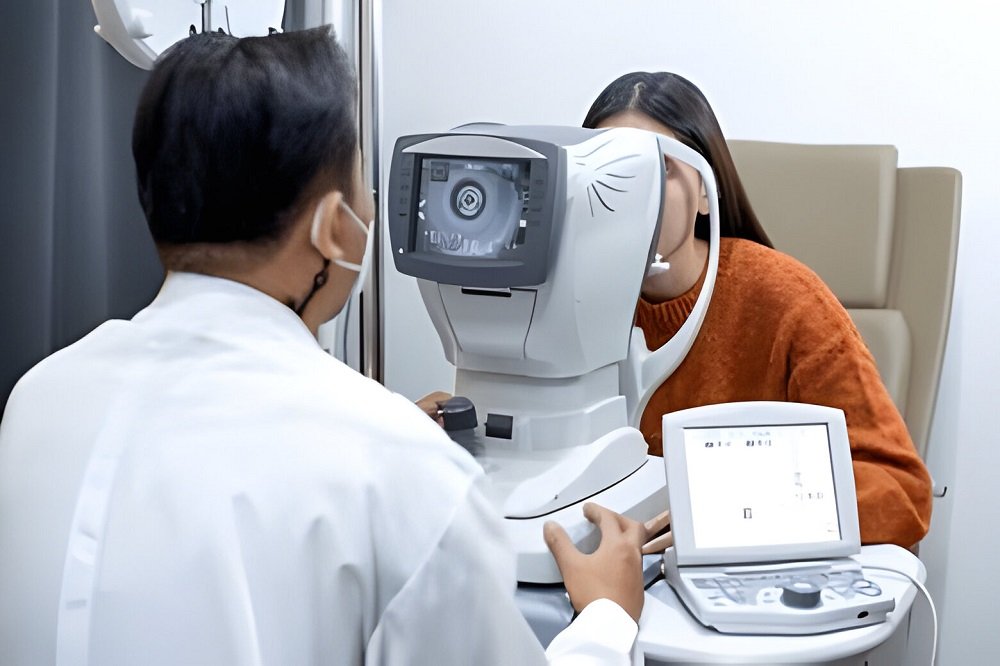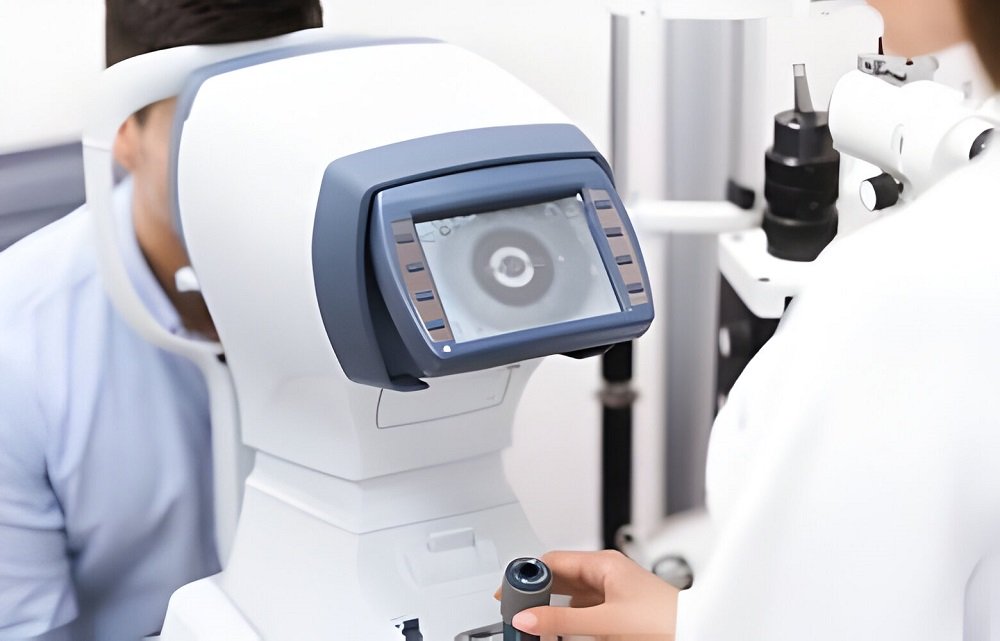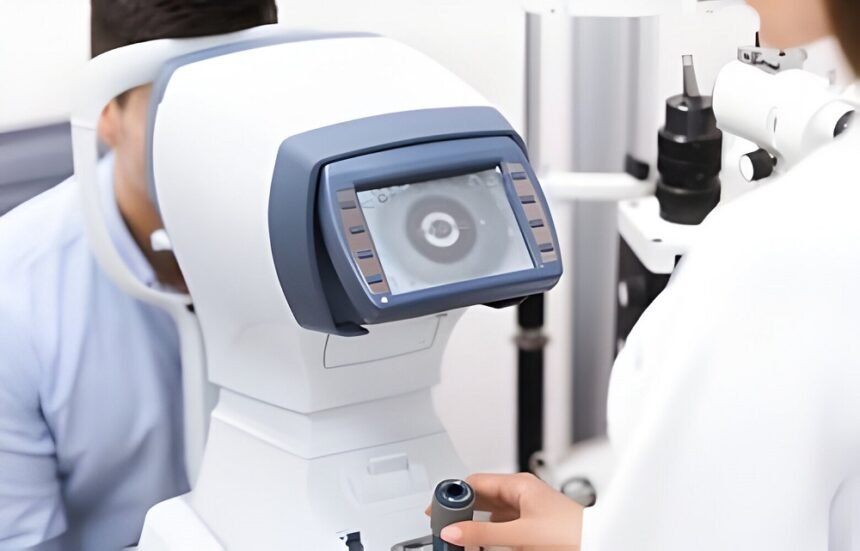Vision care is vital for everyone. Many people around the world have vision problems. These issues can often be corrected with glasses or contact lenses. However, not everyone has access to eye care. In many areas, especially rural ones, getting an eye exam can be difficult. Auto refractometers are changing this. These devices are helping to make vision care more accessible globally. This article will explain how auto refractometers are improving access to eye care worldwide.
What is an Auto Refractometer?
An auto refractometer is a device used to measure the eyes’ refractive error. This error tells whether a person is nearsighted, farsighted, or has astigmatism. The device shines light into the eye and measures how the light reflects off the retina. This measurement helps in determining the right prescription for glasses or contact lenses.
The Need for Accessible Vision Care

Vision problems affect many people across the globe. According to the World Health Organization (WHO), over 2.2 billion people have vision impairment or blindness. Many of these cases could be prevented or corrected with proper eye care. However, in many low-income countries, access to eye care is limited. People in remote areas may need to travel long distances to see an eye doctor. Often, there are no eye specialists available nearby. This lack of access leads to untreated vision problems, which can impact education, work, and daily life.
How Auto Refractometers Improve Accessibility
Auto refractometers are making eye care more accessible in several ways:
1. Ease of Use
Auto refractometers are easy to use. They do not require extensive training. This means that healthcare workers, even those who are not eye specialists, can operate them. In many areas with a shortage of optometrists, this is a big advantage. Health workers in rural clinics or mobile units can use auto refractometers to perform basic eye exams. They can then refer patients for further care if needed.
2. Portability
Many auto refractometers are portable. This makes them ideal for use in remote or underserved areas. Portable auto refractometers can be taken to schools, community centers, or even used during home visits. This mobility ensures that people who cannot easily travel to an eye clinic can still get their eyes checked.
3. Speed and Efficiency
Auto refractometers work quickly. A typical exam takes only a few minutes. This speed allows healthcare providers to see more patients in a shorter time. In areas where healthcare resources are limited, this efficiency is important. It means more people can be screened for vision problems, leading to early detection and treatment.
4. Cost-Effective Solution
Auto refractometers are cost-effective. While the initial cost of the device may be high, the long-term benefits are worth it. These devices reduce the need for specialized staff and expensive infrastructure. This lowers the overall cost of providing eye care. As a result, governments and non-profit organizations can include eye care in their public health programs more easily.
5. Integration with Other Technologies
Modern auto refractometers can be connected to other digital technologies. For example, they can link to telemedicine platforms. This allows eye specialists to review results remotely. In areas where no eye specialists are available, this integration is especially useful. It ensures that patients get accurate diagnoses and appropriate treatment advice.
Case Studies: Auto Refractometers in Action
1. India’s Vision Screening Programs
In India, auto refractometers are part of large-scale vision screening programs. These programs focus on school children and rural populations. Mobile eye care units, equipped with auto refractometers, travel to remote villages. They screen people for vision problems. The portability and ease of use of these devices have allowed millions of people to receive eye care who otherwise would not have had access.
2. African Mobile Clinics
In several African countries, mobile eye clinics with auto refractometers are making a big impact. These clinics visit rural areas where healthcare facilities are scarce. The auto refractometers allow healthcare workers to quickly screen large numbers of people. Those who need further care are referred to hospitals. Others receive prescription glasses on the spot. This approach has greatly improved vision care in these regions.
3. School Vision Programs in Latin America
In Latin America, many schools use auto refractometers in their vision screening programs. These programs ensure that children get early diagnosis and treatment for vision problems. Early intervention is crucial because it helps prevent learning difficulties due to poor vision. The success of these programs shows the importance of auto refractometers in improving the quality of life for young people.
Challenges and Future Prospects

While auto refractometers are making vision care more accessible, challenges remain. The initial cost of the devices can be a barrier, especially for low-income countries. Also, while auto refractometers provide accurate measurements, they do not replace a full eye exam by a qualified optometrist.
However, the future looks promising. As technology advances, auto refractometers are becoming more affordable and portable. Further integration with telemedicine and artificial intelligence (AI) could improve their accuracy and usability. Continued efforts to make these devices available in underserved areas will help reduce the global burden of vision problems.
Conclusion
Auto refractometers are playing a crucial role in making vision care more accessible worldwide. Their ease of use, portability, speed, and cost-effectiveness make them invaluable tools in the fight against preventable blindness and vision impairment. As more countries adopt these devices, we can look forward to a world where everyone, regardless of location or income, has access to the eye care they need. With the help of auto refractometers, the journey toward global eye health is becoming easier every day.



